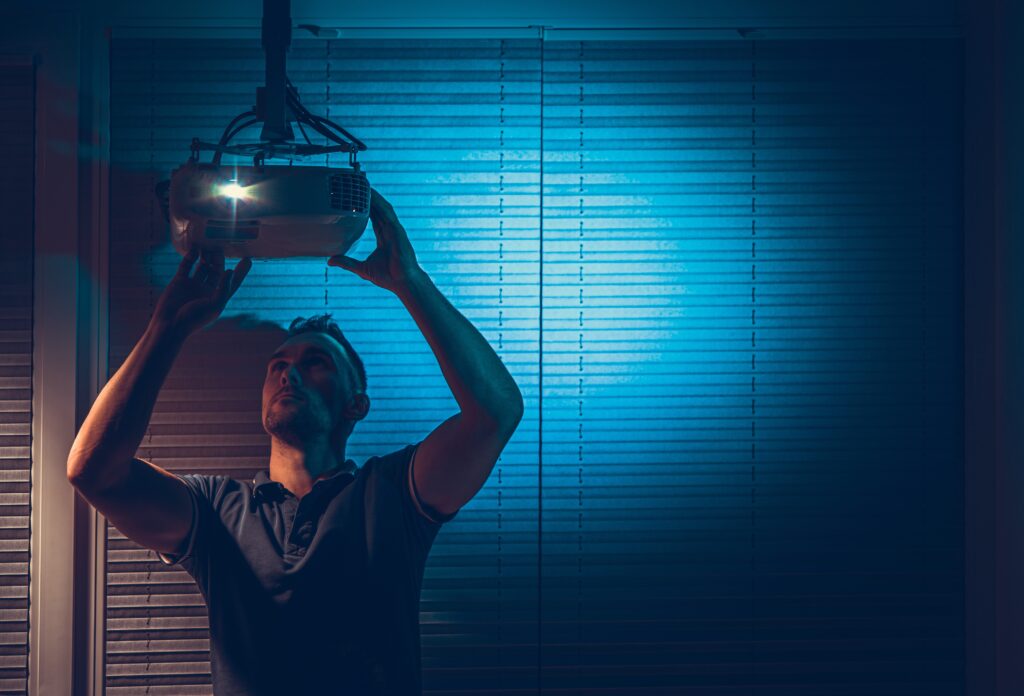So you just got a brand new headset and you’re excited to use it, but you’re not quite sure how to get started. Don’t worry, we’ve got you covered! In this article, we’ll walk you through the basic steps of using a headset, from connecting it to your device, adjusting the settings, and finally enjoying crystal-clear sound for all your audio needs. Whether you’re a gamer, a remote worker, or simply someone who loves to listen to music, this guide will help you make the most out of your new headset.
Choosing the Right Headset
Consider Your Needs and Preferences
When choosing a headset, it’s important to consider your specific needs and preferences. Think about the primary purpose of the headset – whether it is for gaming, work, or general use. Consider factors such as the type of audio you will be listening to, the environment you will be using the headset in, and the level of comfort you require. Additionally, think about any specific features or functionalities you may want, such as noise cancellation or wireless capabilities.
Determine the Type of Headset You Require
Headsets come in various types, each serving different purposes. The two main categories are over-ear and on-ear headsets. Over-ear headsets encompass your entire ear and provide better noise isolation. On-ear headsets rest on top of your ears and are generally more compact and portable. Consider which type is better suited for your needs and preferences. Additionally, there are specialized headsets available for gaming, music production, and communication purposes, so determine which category fits your requirements.
Compare Wired and Wireless Options
When choosing a headset, one of the key decisions you will need to make is whether to opt for a wired or wireless option. Wired headsets connect directly to your device, typically through a 3.5mm audio jack or USB connection. They are often considered more reliable and offer lower latency. On the other hand, wireless headsets provide greater freedom of movement without the need for cables. They generally connect via Bluetooth or a wireless dongle. Consider the pros and cons of each option and decide which one best suits your needs and preferences.
Consider Comfort and Fit
Comfort is an important factor when choosing a headset, as you may be wearing it for long periods of time. Look for headsets with adjustable headbands and cushioned earcups for a comfortable fit. Consider the weight of the headset, as a heavier headset may cause discomfort over extended use. It’s also worth checking if the headset is adjustable to fit different head sizes. Additionally, some headsets offer extra features like rotating earcups, which can enhance both comfort and convenience. Prioritize comfort and fit to ensure an enjoyable experience.
Evaluate Sound Quality and Audio Features
Sound quality is a crucial aspect of any headset. Look for headsets with good frequency response and audio reproduction. Consider whether you prefer a more balanced sound or if you prefer bass-heavy headphones. Some headsets also offer virtual surround sound or 7.1 channel audio, which can enhance the immersive experience for gaming or movies. Pay attention to any additional audio features, such as noise cancellation or microphone monitoring, to further enhance your audio experience.
Connecting the Headset
Check the Compatibility of Your Headset
Before connecting your headset, it’s essential to check its compatibility with your device. Ensure that the headset is compatible with the operating system of your device, whether it’s Windows, macOS, or a gaming console like PlayStation or Xbox. Some headsets may have specific compatibility requirements or may require additional software installations.
Identify the Appropriate Connection Port
Once you have confirmed compatibility, identify the appropriate connection port on your device for your headset. This may be a 3.5mm audio jack, USB port, or a wireless connection. If your device has multiple ports, refer to the manufacturer’s instructions or the device’s user manual to determine which port is intended for audio input/output. Some gaming consoles or PCs may have dedicated audio ports for better audio quality.
Connect the Headset to the Device
To connect your headset, simply plug in the appropriate cable or insert the wireless dongle as per the instructions provided by the manufacturer. If you are using a wired headset, insert the headphone jack into the corresponding port on your device. If you are using a wireless headset, follow the pairing instructions to establish a connection. Once connected, your device should recognize the headset as the default audio output device.
Troubleshoot Connection Issues
If you encounter any connection issues with your headset, try the following troubleshooting steps:
- Verify that the headset is properly connected to the device and that the cable or dongle is securely plugged in.
- Check your device’s settings to ensure that the correct audio output/input device is selected.
- Restart your device and the headset to refresh the connection.
- If using a wireless headset, ensure that the headset is charged and within the Bluetooth range of the device.
- Consult the troubleshooting section of the headset’s user manual or contact the manufacturer’s support for further assistance.
Adjusting Audio Settings
Access the System Settings on Your Device
To adjust audio settings on your device, you will need to access the system settings. On most devices, this can be done by navigating to the settings menu, often represented by a gear icon. Click or tap on the settings icon to access the system settings.
Locate the Sound/Audio Settings
Once you are in the system settings, look for the sound or audio settings section. The exact location may vary depending on your device and operating system. In this section, you will find options to adjust various audio settings such as volume, surround sound, microphone settings, and more.
Adjust the Volume
To adjust the volume, locate the volume settings within the sound or audio settings section. Depending on your device, you may be able to adjust the overall volume or adjust the volume for specific audio outputs, such as headphones or speakers. Use the provided slider or buttons to increase or decrease the volume to your desired level.
Enable or Disable Surround Sound
If your headset supports surround sound, you can enable or disable this feature in the audio settings. Surround sound provides a more immersive audio experience, particularly for gaming and movies. Toggle the surround sound option on or off to suit your preferences and the content you are consuming.
Configure Microphone Settings
If your headset includes a microphone, you will also need to configure the microphone settings. Access the microphone settings within the audio settings section and adjust parameters such as sensitivity, noise cancellation, and input volume. Test the microphone to ensure it is functioning correctly and adjust the settings as necessary for optimal performance.
Managing Calls and Communications
Answering and Ending Calls
If your headset supports telephony functions, you can use it to answer and end calls. When a call comes in, a ringtone or notification will be played through your headset. To answer the call, press the designated button on your headset or use the call control buttons provided on the earcups. To end a call, press the same button again or use the call control buttons.
Adjusting Call Volume
During a call, you may need to adjust the call volume to ensure clear communication. Most headsets have dedicated buttons or controls to increase or decrease the call volume. Use these buttons to adjust the volume according to your preferences. Some headsets may also have the ability to automatically adjust the call volume based on ambient noise levels.
Muting and Unmuting the Microphone
If you need to temporarily mute your microphone during a call, most headsets have a dedicated mute button. Pressing this button will mute your microphone, allowing you to mute background noise or have private conversations. Press the mute button again to unmute the microphone and resume normal communication. Alternatively, you can also use the mute option in the call settings of your device.
Using Call Control Buttons on the Headset
Many headsets feature call control buttons directly on the earcups or inline with the cable. These buttons allow you to conveniently answer or end calls, adjust call volume, mute or unmute the microphone, and even transfer calls between devices. Familiarize yourself with the location and functions of these buttons to easily manage your calls and communications.
Utilizing Call Transfer and Hold Functions
Some headsets offer advanced call management features such as call transfer and call hold. Call transfer allows you to move an ongoing call from your headset to another device, such as your smartphone. Call hold enables you to place a call on hold while you attend to other tasks. These features can be useful in professional settings or when seamlessly switching between devices.
Controlling Multimedia Playback
Play, Pause, and Skip Tracks
If your headset supports multimedia controls, you can use it to play, pause, and skip tracks while listening to music or other media. The controls are usually located on the earcups or inline with the cable. Press the designated play/pause button to pause or resume playback. Use the next/previous track buttons to skip to the next or previous track, respectively.
Adjusting Media Volume
Similar to call volume, you can adjust the volume of media playback using the dedicated volume buttons or controls on your headset. Increase or decrease the volume as needed to achieve your desired listening level. Some headsets may also have the ability to control media volume independently from call volume, allowing you to customize your audio experience.
Utilize Playback Control Buttons on the Headset
To have more control over your media playback, make use of the playback control buttons on your headset. These buttons typically include play/pause, next track, and previous track functions. With these buttons, you can conveniently navigate through your music library or media player without needing to interact directly with your device.
Syncing with Media Players and Streaming Apps
To fully utilize your headset’s playback control buttons and features, ensure that it is properly synced and compatible with your media player or streaming app. Some headsets come with companion apps that provide additional functionality and customization options. Make sure to download and install these apps for seamless integration and enhanced control over your media playback.
Utilizing Voice Commands and Virtual Assistants
Activating Voice Commands
Many headsets come equipped with voice command functionality, allowing you to activate voice recognition software directly from your headset. To activate voice commands, press and hold the designated voice command button on your headset. This will prompt your device’s virtual assistant, such as Siri or Google Assistant, to listen for your commands.
Interacting with Virtual Assistants
Once the voice command functionality is activated, you can interact with your virtual assistant to perform various tasks. You can ask questions, set reminders, send messages, make calls, and control other aspects of your device and connected applications. Each virtual assistant has its own set of supported commands and functions, so familiarize yourself with the available options.
Executing Voice-Enabled Controls
In addition to interacting with virtual assistants, some headsets offer voice-enabled controls for specific functions. These controls allow you to perform actions without needing to physically interact with your device or headset. For example, you can use voice commands to control media playback, adjust volume, answer or reject calls, and execute other functions supported by your headset.
Customizing Voice Command Preferences
To make the most out of voice commands and virtual assistants, explore the settings and preferences options provided by your headset and associated apps. These settings allow you to customize aspects such as wake words, preferred virtual assistant, language settings, and accessibility options. Customizing these preferences ensures a personalized voice command experience tailored to your needs.

Maintaining and Cleaning Your Headset
Handle the Headset with Care
To ensure the longevity of your headset, it’s important to handle it with care. Avoid dropping or mishandling the headset, as this can lead to damage or malfunction. When not in use, store the headset in a safe place to prevent accidental damage. Additionally, be mindful of the cable and its connectors to avoid unnecessary strain or wear.
Store the Headset Properly
When storing your headset, it’s best to keep it in a dedicated case or pouch to protect it from dust and potential damage. Avoid tangling the cable by using cable management solutions or simply wrapping the cable neatly. If your headset is wireless, keep it charged and store it in a location where it can be easily accessed when needed.
Clean the Earcups and Headband
Regularly cleaning your headset is important to ensure hygiene and sound quality. Use a soft, lint-free cloth or a slightly damp cloth to clean the earcups and headband. Avoid using harsh chemicals or abrasive materials that could damage the headset’s finish. Gently wipe away any dirt, oil, or sweat buildup to maintain the appearance and cleanliness of your headset.
Cleaning the Microphone
If your headset has a microphone, ensure that it remains clean for clear communication. Use a small, soft brush or a toothbrush to gently remove any debris or dust from the microphone. Take care not to apply too much pressure to avoid damaging the microphone. If necessary, use a cotton swab with a small amount of rubbing alcohol to disinfect the microphone.
Replacing Worn-out Earpads
Over time, the earpads of your headset may wear out or become less comfortable. If you notice that the earpads are no longer providing adequate cushioning or are deteriorating, consider replacing them. Many headset manufacturers offer replacement earpads that are compatible with their models. Follow the included instructions or consult the manufacturer’s website for guidance on replacing the earpads.
Troubleshooting Common Issues
No Sound or Poor Audio Quality
If you experience no sound or poor audio quality, start by checking the headset’s connection to the device. Ensure that the cable or wireless connection is secure and properly connected. Adjust the volume settings on both the headset and your device to ensure they are not muted or set too low. If the issue persists, try using the headset with a different device to determine if the problem lies with the headset or the original device.
Microphone Not Working
If the microphone is not working, first check the headset’s connection to the device and ensure it is securely connected. Check the microphone settings on your device to ensure the correct input device is selected and that the microphone is not muted. If using a wired headset, ensure that the headphone jack is plugged into the correct port on your device. If the issue continues, try the headset on a different device to determine if the problem is isolated to the original device or the headset itself.
Interference or Connectivity Problems
Interference or connectivity issues can occur with wireless headsets. If you experience these problems, ensure that the headset is within the Bluetooth range of your device and that there are no physical obstructions between the two. Check for any other devices in the vicinity that may be causing interference, such as other Bluetooth devices or Wi-Fi networks. If the issue persists, try resetting the headset and re-establishing the wireless connection.
Compatibility Issues
Compatibility issues may arise if the headset is not properly supported by your device’s operating system or software. Ensure that the headset is compatible with your device and meets the minimum system requirements. Check for any available software or firmware updates for both the device and the headset that may address compatibility issues. If compatibility problems persist, consider contacting the manufacturer’s support for further assistance.
Headset Not Powering On
If your headset fails to power on, first ensure that it is charged or that the batteries are not depleted. If using a wired headset, check the cable and connectors for any signs of damage or wear. Try connecting the headset to a different device or power source to determine if the problem lies with the original device or the headset itself. If the headset still does not power on, contact the manufacturer’s support for troubleshooting assistance or repair options.
Optimizing Headset Performance
Installing Firmware Updates
Regularly updating the firmware of your headset can optimize its performance and add new features. Check the manufacturer’s website or the accompanying software for any available firmware updates. Follow the provided instructions to install the latest firmware onto your headset. Firmware updates can enhance compatibility, fix known issues, and provide overall improvements to the functionality of your headset.
Keeping Drivers up to Date
If you are using a wired headset that requires drivers, it’s important to keep them up to date. Drivers are software components that enable communication between your headset and the operating system. Check the manufacturer’s website or the device’s user manual for instructions on how to download and install the latest drivers. Regularly updating your drivers can ensure optimal performance and compatibility with your device.
Customizing Audio Settings
To enhance your audio experience, explore the audio settings available on your headset and associated apps. Adjust equalizer settings to fine-tune the audio frequencies according to your preferences. Some headsets offer presets for specific genres or audio profiles, allowing you to optimize the audio output for different types of content. Experiment with different settings to find the sound signature that suits you best.
Using Companion Apps
Many headsets come with companion apps that provide additional functionality and customization options. These apps may offer features such as audio presets, firmware updates, battery status monitoring, and equalizer controls. Download and install the companion app for your headset to access these features and maximize its potential.
Exploring Advanced Features
To truly optimize your headset’s performance, take the time to explore and familiarize yourself with its advanced features. Some headsets offer features such as virtual sound profiles, customizable lighting effects, or application-specific settings. Refer to the headset’s user manual or the manufacturer’s website to learn more about these features and how to utilize them effectively.
Exploring Additional Headset Accessories
Consider Headphone Amplifiers for Enhanced Audio
If you are an audiophile or want to enhance the audio quality of your headset, consider investing in a headphone amplifier. A headphone amplifier is a dedicated device that provides higher power output and better audio quality compared to built-in headphone jacks. It can improve the clarity, dynamics, and overall performance of your headset, especially with high-impedance headphones.
Using Headphone Stands and Hangers
To keep your headset organized and easily accessible when not in use, consider using a headphone stand or hanger. These accessories provide a dedicated place to store your headset and prevent it from getting tangled or damaged. Choose a stand or hanger that matches your style and fits the size and weight of your headset.
Headset Cable Management Solutions
If you are using a wired headset, cable management solutions can help keep your cables neat and tangle-free. Cable clips, Velcro straps, or cable sleeves are useful for organizing and securing cables, preventing them from getting in your way or becoming damaged. Invest in cable management solutions to maintain a clean and clutter-free setup.
Replacement Parts and Accessories
Over time, certain parts of your headset may wear out or become damaged. Fortunately, many manufacturers offer replacement parts and accessories that allow you to extend the lifespan of your headset. Commonly replaced parts include earpads, audio cables, microphone booms, and batteries for wireless headsets. Check the manufacturer’s website or contact their support for information on available replacement parts for your specific headset model.
In conclusion, choosing the right headset involves considering your needs and preferences, determining the type of headset required, comparing wired and wireless options, evaluating comfort and fit, and assessing sound quality and audio features. Connecting the headset requires checking compatibility, identifying the appropriate connection port, and troubleshooting any connection issues. Adjusting audio settings involves accessing the system settings, locating the sound/audio settings, adjusting volume, enabling or disabling surround sound, and configuring microphone settings. Managing calls and communications includes answering and ending calls, adjusting call volume, muting and unmuting the microphone, using call control buttons on the headset, and utilizing call transfer and hold functions. Controlling multimedia playback requires playing, pausing, and skipping tracks, adjusting media volume, utilizing playback control buttons on the headset, and syncing with media players and streaming apps. Utilizing voice commands and virtual assistants involves activating voice commands, interacting with virtual assistants, executing voice-enabled controls, and customizing voice command preferences. Maintaining and cleaning the headset involves handling with care, storing properly, cleaning the earcups and headband, cleaning the microphone, and replacing worn-out earpads. Troubleshooting common issues includes addressing no sound or poor audio quality, microphone not working, interference or connectivity problems, compatibility issues, and headset not powering on. Optimizing headset performance involves installing firmware updates, keeping drivers up to date, customizing audio settings, using companion apps, and exploring advanced features. Exploring additional headset accessories involves considering headphone amplifiers for enhanced audio, using headphone stands and hangers, headset cable management solutions, and replacement parts and accessories. By following these guidelines and taking advantage of the various features and customization options, you can make the most out of your headset and enjoy an improved audio experience.



